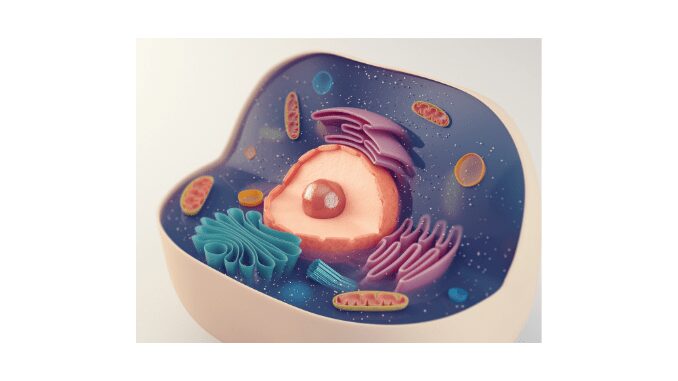
Definition of cell
The definition of the cell is simple, “It is the fundamental, structural, and functional unit of all living organisms“. Anton Von Leeuwenhoek first discovered the cell.
What is a Cell theory?
Malthias Schleiden (German Botanist) on Plants and Theodore Schwann (British Zoologist) on animals independently stated the cell theory in the years 1838 and 1839.
- M. Schleiden stated that “All plants are composed of different kinds of cells which form tissue of the plants”
- T. Schwann stated that “Cells have a thin outer layer”. The bodies of plants and animals are composed of cells and products of cells.
- Another scientist Rudolf Virchow also contributes to the theory and states that cells divide and new cells are formed from pre-existing cells (Omnis cellula-e-cellula).
Therefore Conclusion of cell theory is
- All living organisms are composed of cells and the products of cells.
- All cells arise from pre-existing cells.
Detail definition of cell in biology

Click here: Simple diagram of cell wall for download
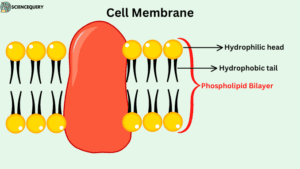
Click here: Simple diagram of cell membrane for download
- The cell wall or cell membrane is the main protective layer of the cell. It helps in protecting against external shock and other factors.
- Inside the cell, there is a dense membrane-bound structure known as the nucleus.
- It further contains chromosomes. Chromosomes have genetic material known as DNA.
- The cytoplasm is a semifluid liquid present in the cell. Various chemical reactions and activities take place in this matrix which keeps the cell functional.
- Eukaryotic cells are also having other membrane-bound structures or organelles. Different cell organelles and their functions are as follows
1. Endoplasmic reticulum (ER)

Click here: Simple diagram of endoplasmic reticulum (ER)
Found abundantly in eukaryotic liver and gonad cells. The main types of ER are rough and smooth ER. Rough ER has ribosomes on its surface and smooth does not have ribosomes. The main functions of ER are the folding of protein molecules in sacs called cisternae and the transport of synthesized proteins in vesicles to the Golgi apparatus.
2. Function and definition of Golgi bodies
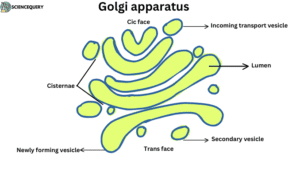
Click here: Simple diagram of Golgi apparatus
Golgi apparatus was first observed by Camillo Golgi (1998). These organelles help in packaging materials and transfer them to other cells or in the cells. These are also important for glycoprotein and glycolipid formation.
3. Lysosomes
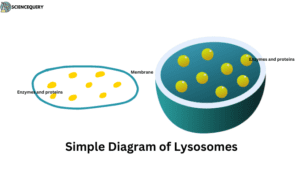
Click here: Simple diagram of lysosomes
These are membrane-bound structures rich in all types of hydrolytic enzymes with acidic pH. These organelles are important for digesting carbohydrates, proteins, lipids, and nucleic acids.
4. Mitochondria is the powerhouse of the cell

Click here: Simple diagram of mitochondria
These are the powerhouse of the cell and are surrounded by a double membrane structure. Mitochondria are the site of aerobic respiration and produce cellular energy in the form of ATPs. These organelles divide by fission and also have single circular DNA and few RNAs.
5. Microbodies
Microbodies are single membrane organelles and are spherically shaped. Filled with enzymes and proteins. These organelles help in the participation of intermediate stages of many biochemical reactions. Helps in the breakdown of complex compounds like fat, and alcohol and simply acts as detoxification in the cell.
6. Vacuoles
These are single membrane organelles of the cell. Function mainly depends on the type of cells. They mainly isolate harmful waste in the cells Also in some cells it stores water mainly in plant cells.
7. Ribosomes
RNA and proteins are the main components of ribosomes. Ribosomes are without any membrane. Eukaryotic ribosomes are the 80S and Prokaryotic ribosomes are the 70S.
8. Centrioles and Chromosomes (Animal cells)
Centrioles are the cylindrical structure of chromosomes. Proteins are the main components of these organelles. The main function of centrioles is to produce cilia interphase and aster and spindle during cell division.
9. Nucleus
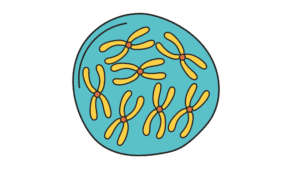
First reported by Robert Brown in 1831. It mainly consists of nucleoplasm, nucleolus (spherical bodies), nuclear pore, and membrane. Chromatin is the nuclear protein fiber in the nucleus. This chromatin contains DNA, RNA, and histone proteins. The nucleus helps in transferring genetic information and thus is the main key organelle of a cell.
Q&A
1. What is the definition of the cell?
It is the fundamental, structural, and functional unit of all living organisms.
2. Define cells in detail?
The cell wall in a plant and a cell membrane in the case of animals are the main protective layers of the cell. This gives a protective outer layer and protects the cell from external shocks. The nucleus contains chromosomes which contain further DNA inside the cell and make a dense appearance. Other organelles of the cells are the endoplasmic reticulum, Golgi bodies, mitochondria, centrioles, ribosomes, vacuoles, etc.
3. Name any five organelles of a cell?
The endoplasmic reticulum, Golgi bodies, mitochondria, centrioles, ribosomes, vacuoles,
